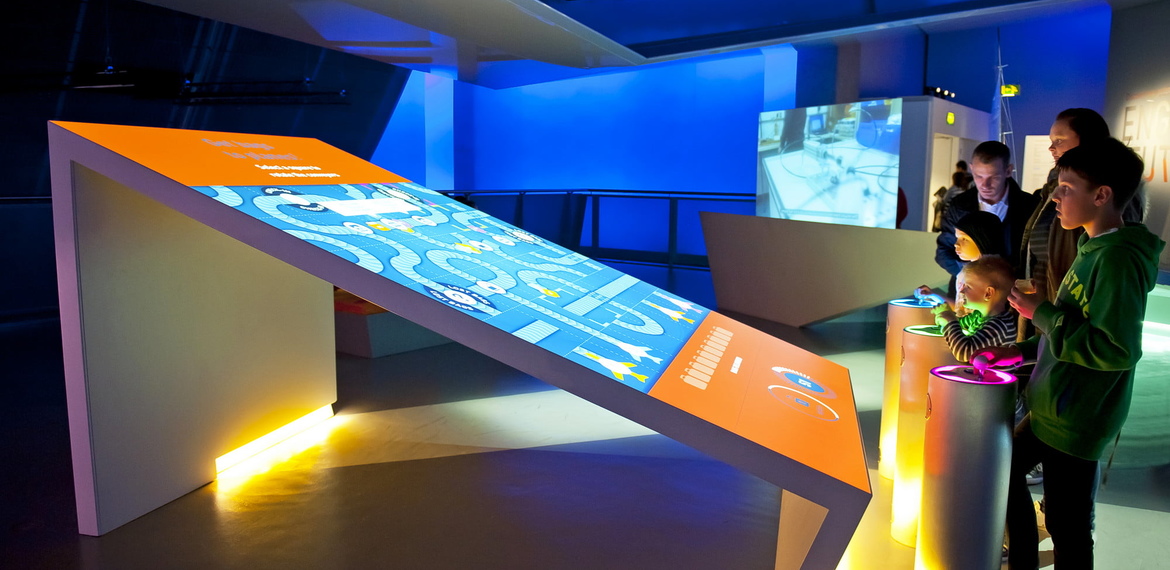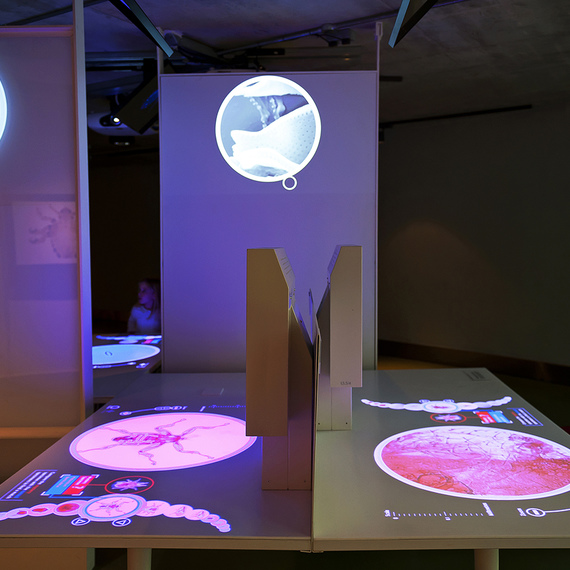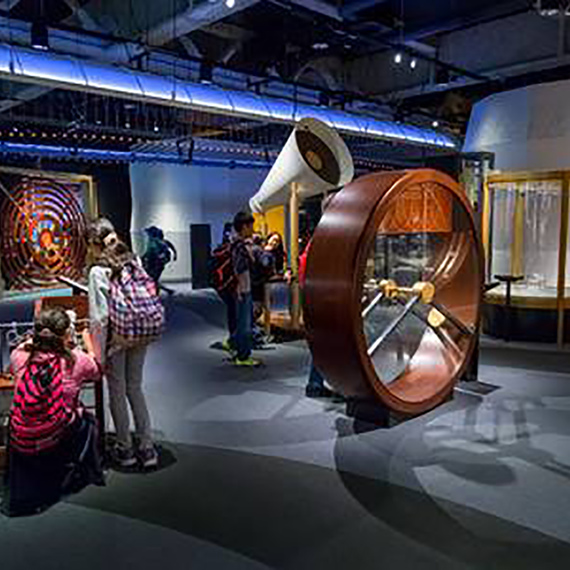What benefits does a museum gain by adopting modern technology?
Or, to be precise in wording, first of all the benefits accrue to the visitor. And the museum, as a result, will have a stream of satisfied customers.
So, the benefits of using modern technology:
Reinforces the impression of the exhibit
Bright, original presentation, often unexpected, leaves the event in the memory for a long time
The ability to visually demonstrate phenomena or processes that cannot otherwise be shown.
In case the exhibit is too small, or too big. It's in another museum, lost, destroyed, or it's a major natural phenomenon, maybe even dangerous. Now, all of this can be simulated. And what's more, the visitor can control the process (go into outer space, launch a volcanic eruption, examine a dinosaur). And much more.
Separate the same information, to different target groups
In one and the same museum, there can be absolutely different social and age groups among visitors. And it is necessary to convey to each of them the most important things that are interesting and understandable to them.
The interactive content is divided into adult, children's content.
Can be divided into user levels (beginner, advanced, etc.)
It is possible to make it convenient for people with disabilities. Add headphones, Braille language, lifting mechanisms, etc.
Facilitate obtaining necessary information, as well as updating it promptly
Interactive kiosks, guides, touch-panels, are filled with useful content. This can include an exposition plan, opening hours, dates of events, etc.
But as with any technically demanding process, errors are inevitable
In the absence of a wealth of experience, museums face typical problems:
Equipment installation, without project design
This means that factors that have already been encountered during operation may impede the full functionality of the unit. This can be, for example, installation in an inconvenient location. Disparate equipment that is not compatible in terms of parameters. etc.
Insufficient attention is paid to working with content
When purchasing equipment, one should take into account in advance that content filling is the most important factor for successful operation of multimedia and interactive equipment. And this is not always a job that can be done by the staff of a cultural institution. Often, it can only be done by a technically competent specialist. Therefore, one should think in advance who will do it and take it into account in budgeting.
The oversaturation of the exposition with the objects of interactive, multimedia technologies.
This, again, refers to a violation of the installation technology. Namely, the design. Only by carrying out all the necessary calculations and planning is it possible to maintain a balance and make the equipment an aid, rather than a distraction and a hindrance.To avoid something like this, stick to the checklist we've developed:
- Determine the goals and objectives assigned to the equipment
- Draw up detailed terms of reference together with the contractor
- Write out a scenario plan that outlines where, what equipment should be installed.
- To approve the estimate
- To transfer to the contractor in production
- The contractor shall prepare all content, software and equipment by the deadline specified in the contract
- After that the installation can be started
- The next step is to connect, configure, download content
- Finally, the contractor hands over the multimedia suite for operation and trains the responsible employees.
It should be understood that these are the main steps that are equally important. In addition, there are many smaller tasks that have to be carried out as part of the project implementation.
Therefore, in each case, we negotiate all the nuances with the customer and only then sign the contract.


